Deriving Quantitative Crystallographic Information from the Wavelength-Resolved Neutron Transmission Analysis Performed in Imaging Mode
Abstract
:1. Introduction
2. Bragg-Edge/Dip Profile Analysis for Quantitative Evaluation of Crystalline Microstructural Information
2.1. Information Included in Bragg-Edge/Dip Neutron Transmission Spectrum
2.2. Profile Calculation Model for Bragg-Edge Transmission Spectrum Analysis: Algorithm of the RITS Code
- Automatic calculation function for multiple elements, multiple crystalline phases and 230 crystal structure space groups [5].
2.2.1. Neutron Transmission and Total Cross-Section
2.2.2. Coherent Elastic Scattering (Nuclear Bragg Scattering) and the Crystal Structure Factor
2.2.3. Edge Profile Function Rhkl(λ) for Macro/Micro-Strain Correction/Analysis
2.2.4. March-Dollase Type Preferred Orientation Function Phkl(λ) for Crystallographic Texture Correction/Analysis
2.2.5. Sabine’s Primary Extinction Correction Function Ehkl(λ) for Crystallite Size Analysis
2.3. Bragg-Dip Pattern Analysis Method
2.3.1. Database Matching Method for Fast Determination of the Number of Crystalline Grains and Their Crystal Orientations
- Fast determination of crystal orientation without any initial estimation.
- Data obtained from multiple grains can be analysed. In this case, the number of grains and their crystal orientations are individually determined. (Of course, there is a limit of acceptable number).
2.3.2. Validity of Evaluated Crystal Orientation
3. Texture and Crystallite-Size Imaging by Rietveld-Type Bragg-Edge Analysis
3.1. Experimental
- Two rolled plates (Samples A and B in Figure 4). Relation between neutron transmission direction and rolling direction are perpendicular.
- Welded plate (Sample D in Figure 4). Relation between neutron transmission direction and rolling direction are perpendicular. (Relation between neutron transmission direction and normal direction (ND) are parallel.)
- Welded plate (Sample C in Figure 4). Relation between neutron transmission direction and rolling direction (RD) are parallel.
3.2. Spectrum Fitting Analysis Results
3.3. Imaging Results
3.4. Check by Optical Microscope and Neutron Diffraction
4. Crystalline Phase Imaging with Texture/Extinction Corrections
4.1. Experimental
4.2. Spectrum Fitting Analysis Result
4.3. Imaging Results
4.4. Check by Neutron Diffraction
5. Imaging of Crystal Lattice Plane Spacing (Macro-Strain) and Its Distribution’s Broadening (Micro-Strain)
5.1. Experimental
5.2. Spectrum Fitting Analysis Results
5.3. Imaging Results
5.4. Current Status at Compact Accelerator Driven Pulsed Neutron Sources
5.5. Check by Neutron Diffraction
6. Development of Tensor CT Algorithm for Macro-Strain Tomography
6.1. Algorithm Based on the Maximum Likelihood - Expectation Maximization
6.2. Experimental
6.3. Tomographic Imaging Results
7. Grain Orientation Imaging by Bragg-Dip Pattern Analysis
7.1. Experimental
7.2. Imaging Results
8. Conclusions
Acknowledgements
Conflicts of Interest
References
- Sato, H.; Kamiyama, T.; Kiyanagi, Y. A Rietveld-type analysis code for pulsed neutron Bragg-edge transmission imaging and quantitative evaluation of texture and microstructure of a welded α-iron plate. Mater. Trans. 2011, 52, 1294–1302. [Google Scholar] [CrossRef]
- Sato, H.; Kamiyama, T.; Iwase, K.; Ishigaki, T.; Kiyanagi, Y. Pulsed neutron spectroscopic imaging for crystallographic texture and microstructure. Nucl. Instrum. Methods A 2011, 651, 216–220. [Google Scholar] [CrossRef]
- Iwase, K.; Sato, H.; Harjo, S.; Kamiyama, T.; Ito, T.; Takata, S.; Aizawa, K.; Kiyanagi, Y. In situ lattice strain mapping during tensile loading using the neutron transmission and diffraction methods. J. Appl. Crystallogr. 2012, 45, 113–118. [Google Scholar] [CrossRef]
- Kiyanagi, Y.; Sato, H.; Kamiyama, T.; Shinohara, T. A new imaging method using pulsed neutron sources for visualizing structural and dynamical information. J. Phys. Conf. Ser. 2012, 340. [Google Scholar] [CrossRef]
- Sato, H.; Shinohara, T.; Kiyanagi, R.; Aizawa, K.; Ooi, M.; Harada, M.; Oikawa, K.; Maekawa, F.; Iwase, K.; Kamiyama, T.; et al. Upgrade of Bragg edge analysis techniques of the RITS code for crystalline structural information imaging. Phys. Procedia 2013, 43, 186–195. [Google Scholar] [CrossRef]
- Sato, H.; Sato, T.; Shiota, Y.; Kamiyama, T.; Tremsin, A.S.; Ohnuma, M.; Kiyanagi, Y. Relation between Vickers hardness and Bragg-edge broadening in quenched steel rods observed by pulsed neutron transmission imaging. Mater. Trans. 2015, 56, 1147–1152. [Google Scholar] [CrossRef]
- Sato, H.; Watanabe, K.; Kiyokawa, K.; Kiyanagi, R.; Hara, K.Y.; Kamiyama, T.; Furusaka, M.; Shinohara, T.; Kiyanagi, Y. Further improvement of the RITS code for pulsed neutron Bragg-edge transmission imaging. Phys. Procedia 2017, 88, 322–330. [Google Scholar] [CrossRef]
- Kamiyama, T.; Iwase, K.; Sato, H.; Harjo, S.; Ito, T.; Takata, S.; Aizawa, K.; Kiyanagi, Y. Microstructural information mapping of a plastic-deformed α-iron plate during tensile tests using pulsed neutron transmission. Phys. Procedia 2017, 88, 50–57. [Google Scholar] [CrossRef]
- Su, Y.H.; Oikawa, K.; Shinohara, T.; Kai, T.; Hiroi, K.; Harjo, S.; Kawasaki, T.; Gong, W.; Zhang, S.Y.; Parker, J.D.; et al. Time-of-flight neutron transmission imaging of martensite transformation in bent plates of a Fe-25Ni-0.4C alloy. Phys. Procedia 2017, 88, 42–49. [Google Scholar] [CrossRef]
- Rietveld, H.M. A profile refinement method for nuclear and magnetic structures. J. Appl. Crystallogr. 1969, 2, 65–71. [Google Scholar] [CrossRef]
- Marquardt, D.W. An algorithm for least-squares estimation of nonlinear parameters. J. Soc. Indust. Appl. Math. 1963, 11, 431–441. [Google Scholar] [CrossRef]
- Oba, Y.; Morooka, S.; Ohishi, K.; Sato, N.; Inoue, R.; Adachi, N.; Suzuki, J.; Tsuchiyama, T.; Gilbert, E.P.; Sugiyama, M. Magnetic scattering in the simultaneous measurement of small-angle neutron scattering and Bragg edge transmission from steel. J. Appl. Crystallogr. 2016, 49, 1659–1664. [Google Scholar] [CrossRef] [PubMed]
- Mamiya, H.; Oba, Y.; Terada, N.; Watanabe, N.; Hiroi, K.; Shinohara, T.; Oikawa, K. Magnetic Bragg dip and Bragg edge in neutron transmission spectra of typical spin superstructure. Sci. Rep. 2017, 7. [Google Scholar] [CrossRef] [PubMed]
- Petriw, S.; Dawidowski, J.; Santisteban, J. Porosity effects on the neutron total cross section of graphite. J. Nucl. Mater. 2010, 396, 181–188. [Google Scholar] [CrossRef]
- Oba, Y.; Morooka, S.; Ohishi, K.; Suzuki, J.; Takata, S.; Sato, N.; Inoue, R.; Tsuchiyama, T.; Gilbert, E.P.; Sugiyama, M. Energy-resolved small-angle neutron scattering from steel. J. Appl. Crystallogr. 2017, 50, 334–339. [Google Scholar] [CrossRef]
- Granada, J.R. Total scattering cross section of solids for cold and epithermal neutrons. Z. Naturforsch. A 1984, 39, 1160–1167. [Google Scholar] [CrossRef]
- Kropff, F.; Granada, J.R. CRIPO: A fast Computer Code for the Evaluation of σT in Polycrystalline Materials; Unpublished Report (CAB-1977); Centro Atomico Bariloche, Institute Balseiro: Bariloche, Argentina, 1977.
- Vogel, S. A Rietveld-Approach for the Analysis of Neutron Time-of-Flight Transmission Data. Ph.D. Thesis, Christian Albrechts Universität, Kiel, Germany, May 2000. [Google Scholar]
- Boin, M. NXS: A program library for neutron cross section calculations. J. Appl. Crystallogr. 2012, 45, 603–607. [Google Scholar] [CrossRef]
- Fermi, E.; Sturm, W.J.; Sachs, R.G. The transmission of slow neutrons through microcrystalline materials. Phys. Rev. 1947, 71, 589–594. [Google Scholar] [CrossRef]
- Von Dreele, R.B.; Jorgensen, J.D.; Windsor, C.G. Rietveld refinement with spallation neutron powder diffraction data. J. Appl. Crystallogr. 1982, 15, 581–589. [Google Scholar] [CrossRef]
- Larson, A.C.; Von Dreele, R.B. General Structure Analysis System (GSAS); Los Alamos National Laboratory Report LAUR 86-748; Los Alamos National Laboratory: Los Alamos, NM, USA, 2004.
- Dollase, W.A. Correction of intensities for preferred orientation in powder diffractometry: Application of the March model. J. Appl. Crystallogr. 1986, 19, 267–272. [Google Scholar] [CrossRef]
- Sabine, T.M. A reconciliation of extinction theories. Acta Crystallogr. Sec. A 1988, 44, 368–373. [Google Scholar] [CrossRef]
- Sabine, T.M.; Von Dreele, R.B.; Jørgensen, J.E. Extinction in time-of-flight neutron powder diffractometry. Acta Crystallogr. Sec. A 1988, 44, 374–379. [Google Scholar] [CrossRef]
- Santisteban, J.R.; Edwards, L.; Steuwer, A.; Withers, P.J. Time-of-flight neutron transmission diffraction. J. Appl. Crystallogr. 2001, 34, 289–297. [Google Scholar] [CrossRef]
- Santisteban, J.R.; Edwards, L.; Fitzpatrick, M.E.; Steuwer, A.; Withers, P.J.; Daymond, M.R.; Johnson, M.W.; Rhodes, N.; Schooneveld, E.M. Strain imaging by Bragg edge neutron transmission. Nucl. Instrum. Methods A 2002, 481, 765–768. [Google Scholar] [CrossRef]
- Sato, H.; Shiota, Y.; Morooka, S.; Todaka, Y.; Adachi, N.; Sadamatsu, S.; Oikawa, K.; Harada, M.; Zhang, S.Y.; Su, Y.H.; et al. Inverse pole figure mapping of bulk crystalline grains in a polycrystalline steel plate by pulsed neutron Bragg-dip transmission imaging. J. Appl. Crystallogr. 2017, 50, 1601–1610. [Google Scholar] [CrossRef]
- Santisteban, J.R. Time-of-flight neutron transmission of mosaic crystals. J. Appl. Crystallogr. 2005, 38, 934–944. [Google Scholar] [CrossRef]
- Malamud, F.; Santisteban, J.R. Full-pattern analysis of time-of-flight neutron transmission of mosaic crystals. J. Appl. Crystallogr. 2016, 49, 348–365. [Google Scholar] [CrossRef]
- Peetermans, S.; King, A.; Ludwig, W.; Reischig, P.; Lehmann, E.H. Cold neutron diffraction contrast tomography of polycrystalline material. Analyst 2014, 139, 5765–5771. [Google Scholar] [CrossRef] [PubMed]
- Cereser, A.; Strobl, M.; Hall, S.A.; Steuwer, A.; Kiyanagi, R.; Tremsin, A.S.; Knudsen, E.B.; Shinohara, T.; Willendrup, P.K.; Fanta, A.B.S.; et al. Time-of-flight three dimensional neutron diffraction in transmission mode for mapping crystal grain structures. Sci. Rep. 2017, 7. [Google Scholar] [CrossRef] [PubMed]
- Oikawa, K.; Maekawa, F.; Harada, M.; Kai, T.; Meigo, S.; Kasugai, Y.; Ooi, M.; Sakai, K.; Teshigawara, M.; Hasegawa, S.; et al. Design and application of NOBORU—NeutrOn Beam line for Observation and Research Use at J-PARC. Nucl. Instrum. Methods A 2008, 589, 310–317. [Google Scholar] [CrossRef]
- Seidel, L.; Hölscher, M.; Lücke, K. Rolling and recrystallization textures in iron-3% silicon. Textures Microstr. 1989, 11, 171–185. [Google Scholar] [CrossRef]
- Furusaka, M.; Sato, H.; Kamiyama, T.; Ohnuma, M.; Kiyanagi, Y. Activity of Hokkaido University Neutron Source, HUNS. Phys. Procedia 2014, 60, 167–174. [Google Scholar] [CrossRef]
- Sato, H.; Shiota, Y.; Kamiyama, T.; Ohnuma, M.; Furusaka, M.; Kiyanagi, Y. Performance of the Bragg-edge transmission imaging at a compact accelerator-driven pulsed neutron source. Phys. Procedia 2014, 60, 254–263. [Google Scholar] [CrossRef]
- Anderson, I.S.; Andreani, C.; Carpenter, J.M.; Festa, G.; Gorini, G.; Loong, C.-K.; Senesi, R. Research opportunities with compact accelerator-driven neutron sources. Phys. Rep. 2016, 654, 1–58. [Google Scholar] [CrossRef]
- Uno, S.; Uchida, T.; Sekimoto, M.; Murakami, T.; Miyama, K.; Shoji, M.; Nakano, E.; Koike, T.; Morita, K.; Sato, H.; et al. Two-dimensional neutron detector with GEM and its applications. Phys. Procedia 2012, 26, 142–152. [Google Scholar] [CrossRef]
- Ishigaki, T.; Hoshikawa, A.; Yonemura, M.; Morishima, T.; Kamiyama, T.; Oishi, R.; Aizawa, K.; Sakuma, T.; Tomota, Y.; Arai, M.; et al. IBARAKI materials design diffractometer (iMATERIA)—Versatile neutron diffractometer at J-PARC. Nucl. Instrum. Methods A 2009, 600, 189–191. [Google Scholar] [CrossRef]
- Oishi, R.; Yonemura, M.; Nishimaki, Y.; Torii, S.; Hoshikawa, A.; Ishigaki, T.; Morishima, T.; Mori, K.; Kamiyama, T. Rietveld analysis software for J-PARC. Nucl. Instrum. Methods A 2009, 600, 94–96. [Google Scholar] [CrossRef]
- Sato, H.; Sato, M.; Ishikawa, H.; Su, Y.H.; Shinohara, T.; Kamiyama, T.; Furusaka, M. Accuracy of quantification of crystalline phases evaluated by pulsed neutron Bragg-edge transmission imaging performed at J-PARC and HUNS. ISIJ Int. in preparation.
- Steuwer, A.; Withers, P.J.; Santisteban, J.R.; Edwards, L. Using pulsed neutron transmission for crystalline phase imaging and analysis. J. Appl. Phys. 2005, 97. [Google Scholar] [CrossRef]
- Woracek, R.; Penumadu, D.; Kardjilov, N.; Hilger, A.; Boin, M.; Banhart, J.; Manke, I. 3D mapping of crystallographic phase distribution using energy-selective neutron tomography. Adv. Mater. 2014, 26, 4069–4073. [Google Scholar] [CrossRef] [PubMed]
- Sato, H.; Mochiki, K.; Tanaka, K.; Ishizuka, K.; Ishikawa, H.; Kamiyama, T.; Kiyanagi, Y. A new high-speed camera type detector for time-of-flight neutron imaging and its application to crystalline phase analysis at a coupled-moderator based pulsed neutron source driven by a compact accelerator. Nucl. Instrum. Methods A. in preparation.
- Shiota, Y.; Hasemi, H.; Kiyanagi, Y. Crystallographic analysis of a Japanese sword by using Bragg edge transmission spectroscopy. Phys. Procedia 2017, 88, 128–133. [Google Scholar] [CrossRef]
- Tremsin, A.S.; McPhate, J.B.; Steuwer, A.; Kockelmann, W.; Paradowska, A.M.; Kelleher, J.F.; Vallerga, J.V.; Siegmund, O.H.W.; Feller, W.B. High-resolution strain mapping through time-of-flight neutron transmission diffraction with a microchannel plate neutron counting detector. Strain 2012, 48, 296–305. [Google Scholar] [CrossRef]
- Sato, H.; Sasaki, T.; Moriya, T.; Ishikawa, H.; Kamiyama, T.; Furusaka, M. High wavelength-resolution Bragg-edge/dip transmission imaging instrument with a supermirror guide-tube coupled to a decoupled thermal-neutron moderator at Hokkaido University Neutron Source. Physica B 2017. [Google Scholar] [CrossRef]
- Kamiyama, T.; Narita, Y.; Sato, H.; Ohnuma, M.; Kiyanagi, Y. Structural change of carbon anode in a lithium-ion battery product associated with charging process observed by neutron transmission Bragg-edge imaging. Phys. Procedia 2017, 88, 27–33. [Google Scholar] [CrossRef]
- Harjo, S.; Ito, T.; Aizawa, K.; Arima, H.; Abe, J.; Moriai, A.; Iwahashi, T.; Kamiyama, T. Current status of engineering materials diffractometer at J-PARC. Mater. Sci. Forum 2011, 681, 443–448. [Google Scholar] [CrossRef]
- Sato, H.; Takada, O.; Satoh, S.; Kamiyama, T.; Kiyanagi, Y. Development of material evaluation method by using a pulsed neutron transmission with pixel type detectors. Nucl. Instrum. Methods A 2010, 623, 597–599. [Google Scholar] [CrossRef]
- Ungár, T.; Harjo, S.; Kawasaki, T.; Tomota, Y.; Ribárik, G.; Shi, Z. Composite behavior of lath martensite steels induced by plastic strain, a new paradigm for the elastic-plastic response of martensitic steels. Metall. Mater. Trans. A 2017, 48, 159–167. [Google Scholar]
- Kirkwood, H.J.; Zhang, S.Y.; Tremsin, A.S.; Korsunsky, A.M.; Baimpas, N.; Abbey, B. Neutron strain tomography using the radon transform. Mater. Today Proc. 2015, 2, S414–S423. [Google Scholar] [CrossRef]
- Hendriks, J.N.; Gregg, A.W.T.; Wensrich, C.M.; Tremsin, A.S.; Shinohara, T.; Meylan, M.; Kisi, E.H.; Luzin, V.; Kirsten, O. Bragg-edge elastic strain tomography for in situ systems from energy-resolved neutron transmission imaging. Phys. Rev. Mater. 2017, 1. [Google Scholar] [CrossRef]
- Sato, H.; Shiota, Y.; Shinohara, T.; Kamiyama, T.; Ohnuma, M.; Furusaka, M.; Kiyanagi, Y. Development of the tensor CT algorithm for strain tomography using Bragg-edge neutron transmission. Phys. Procedia 2015, 69, 349–357. [Google Scholar] [CrossRef]
- Dempster, A.P.; Laird, N.M.; Rubin, D.B. Maximum likelihood from incomplete data via the EM algorithm. J. Royal Statistical Soc. Ser. B 1977, 39, 1–38. [Google Scholar]
- Webster, G.A. Neutron Diffraction Measurements of Residual Stress in A Shrink-Fit Ring and Plug; VAMAS Report 38; VAMAS TWA 20: London, UK, 2000; ISSN 1016-2186. [Google Scholar]
- Shinohara, T.; Kai, T.; Oikawa, K.; Segawa, M.; Harada, M.; Nakatani, T.; Ooi, M.; Aizawa, K.; Sato, H.; Kamiyama, T.; et al. Final design of the Energy-Resolved Neutron Imaging System “RADEN” at J-PARC. J. Phys. Conf. Ser. 2016, 746. [Google Scholar] [CrossRef]
- Kockelmann, W.; Burca, G.; Kelleher, J.F.; Kabra, S.; Zhang, S.Y.; Rhodes, N.J.; Schooneveld, E.M.; Sykora, J.; Pooley, D.E.; Nightingale, J.B.; et al. Status of the neutron imaging and diffraction instrument IMAT. Phys. Procedia 2015, 69, 71–78. [Google Scholar] [CrossRef]
- Strobl, M. The scope of the imaging instrument project ODIN at ESS. Phys. Procedia 2015, 69, 18–26. [Google Scholar] [CrossRef]
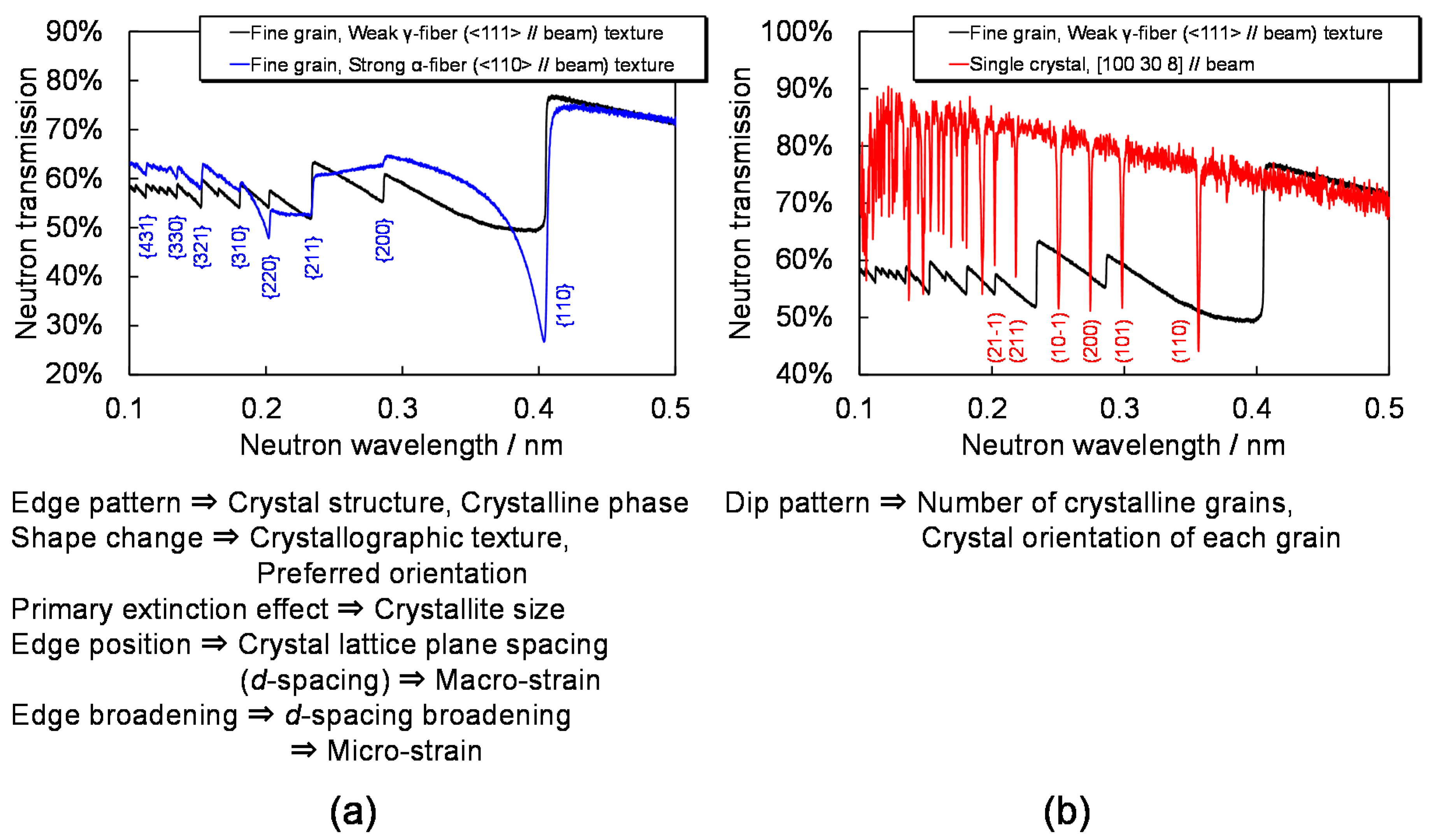
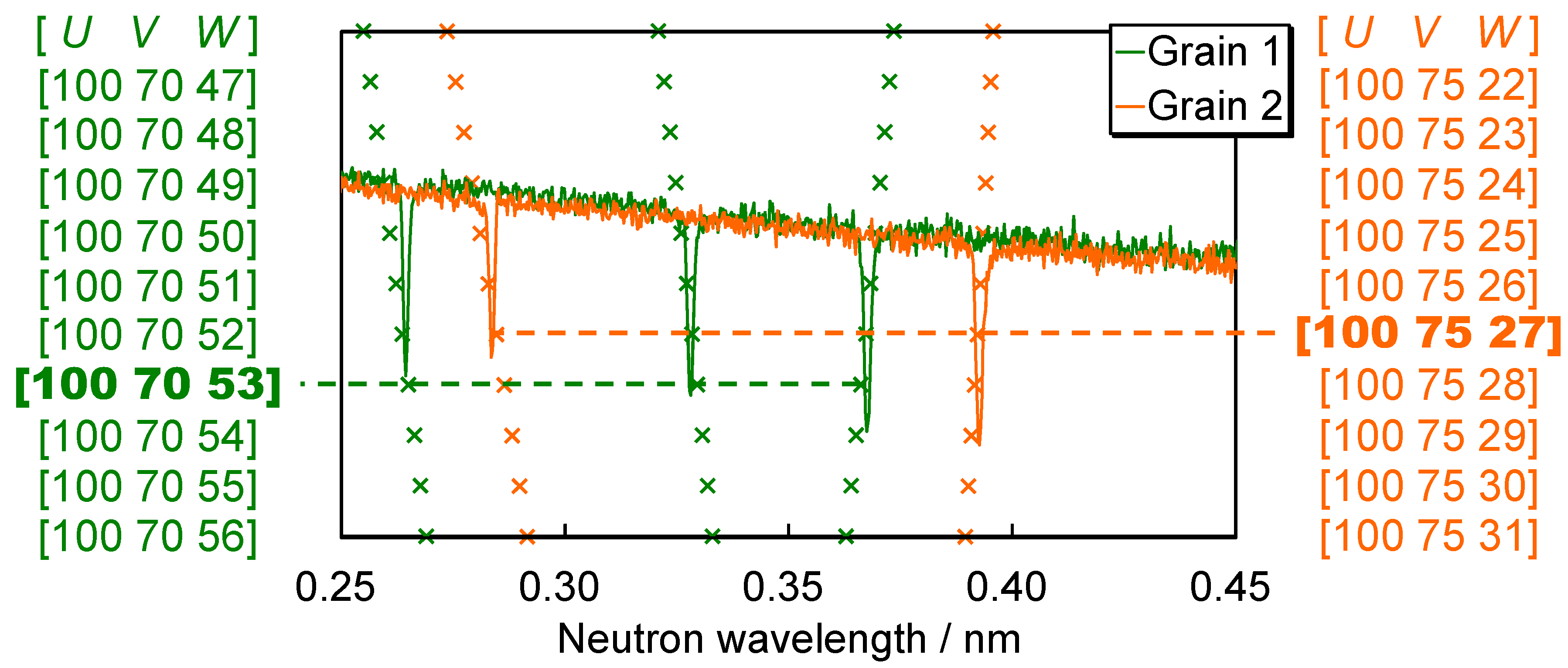
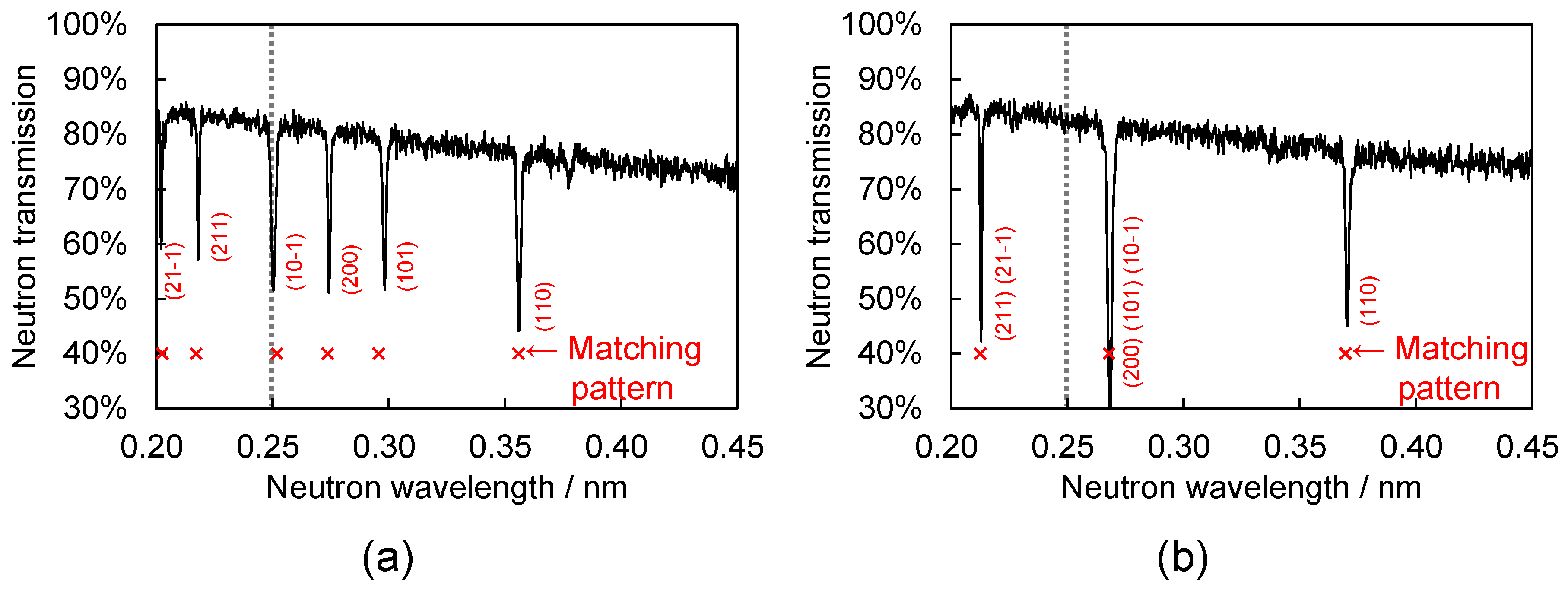
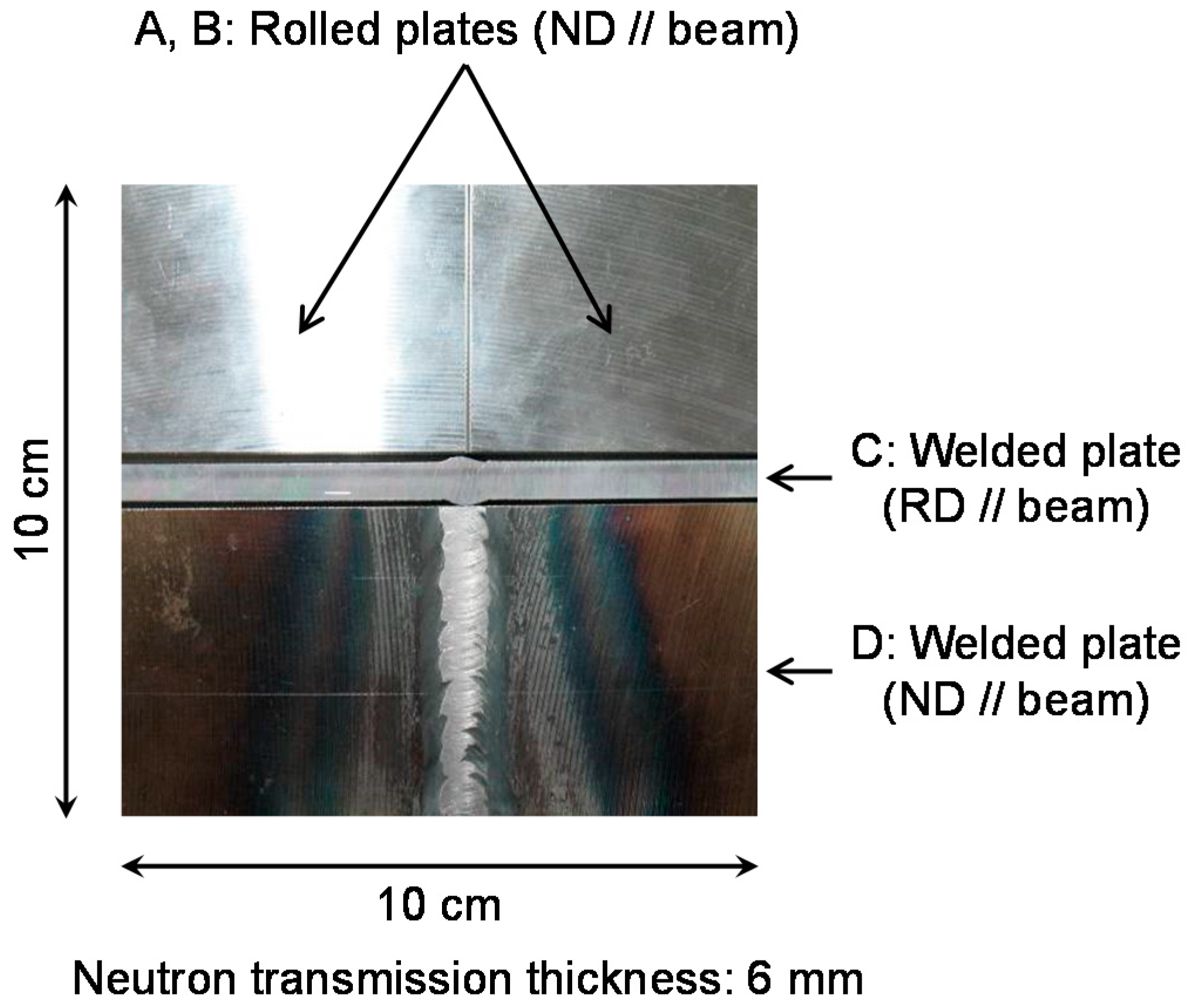
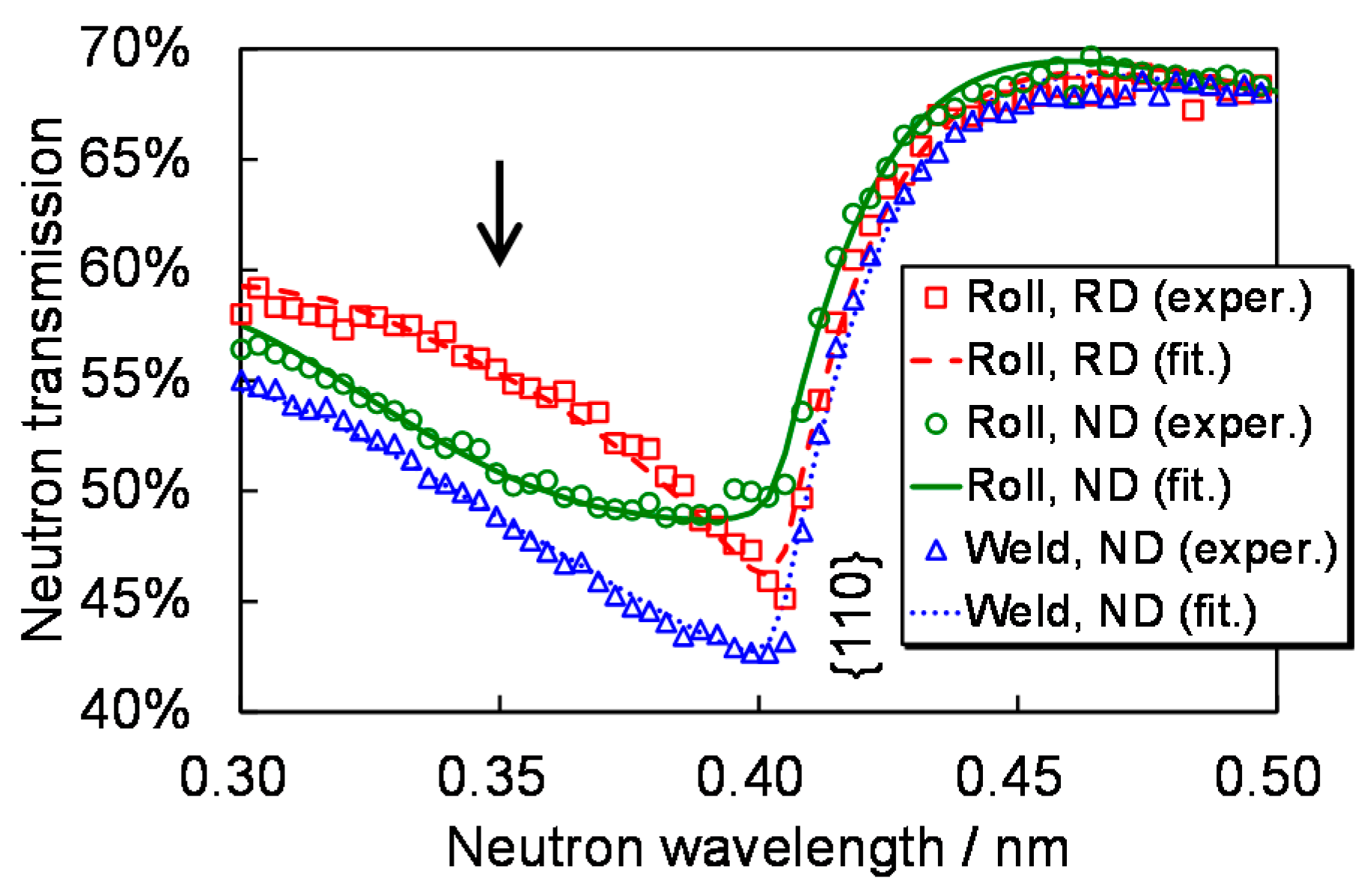

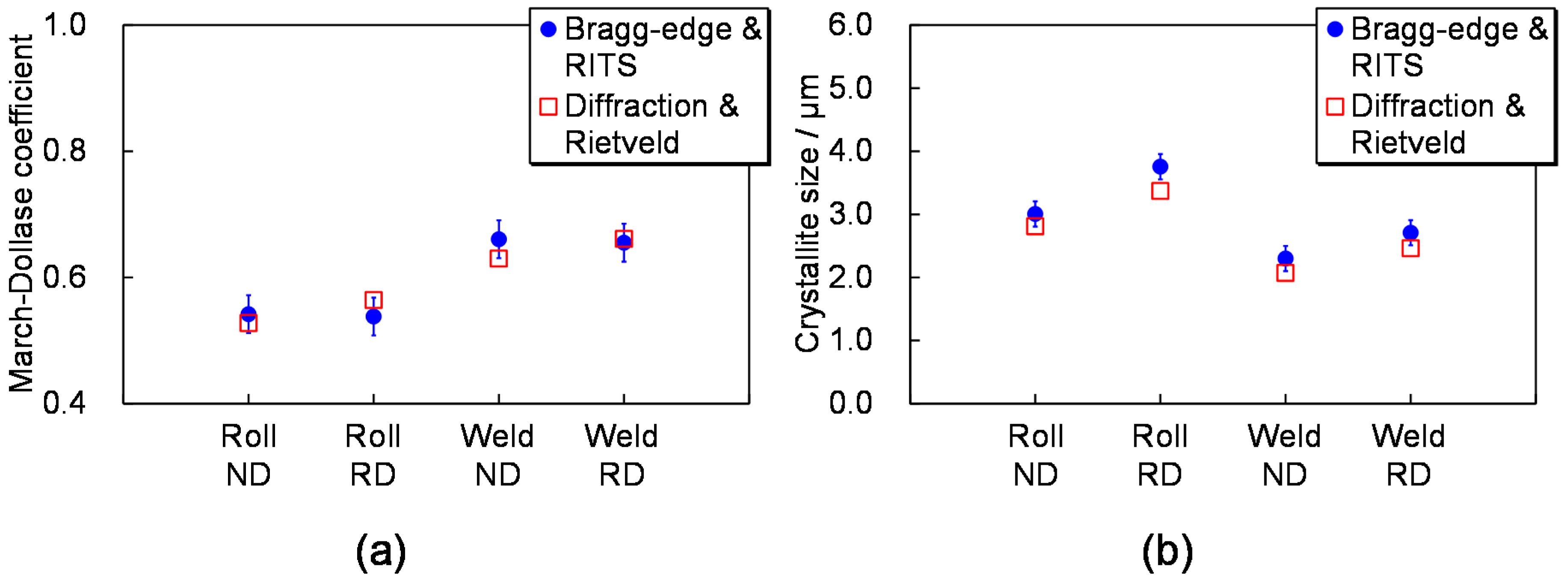
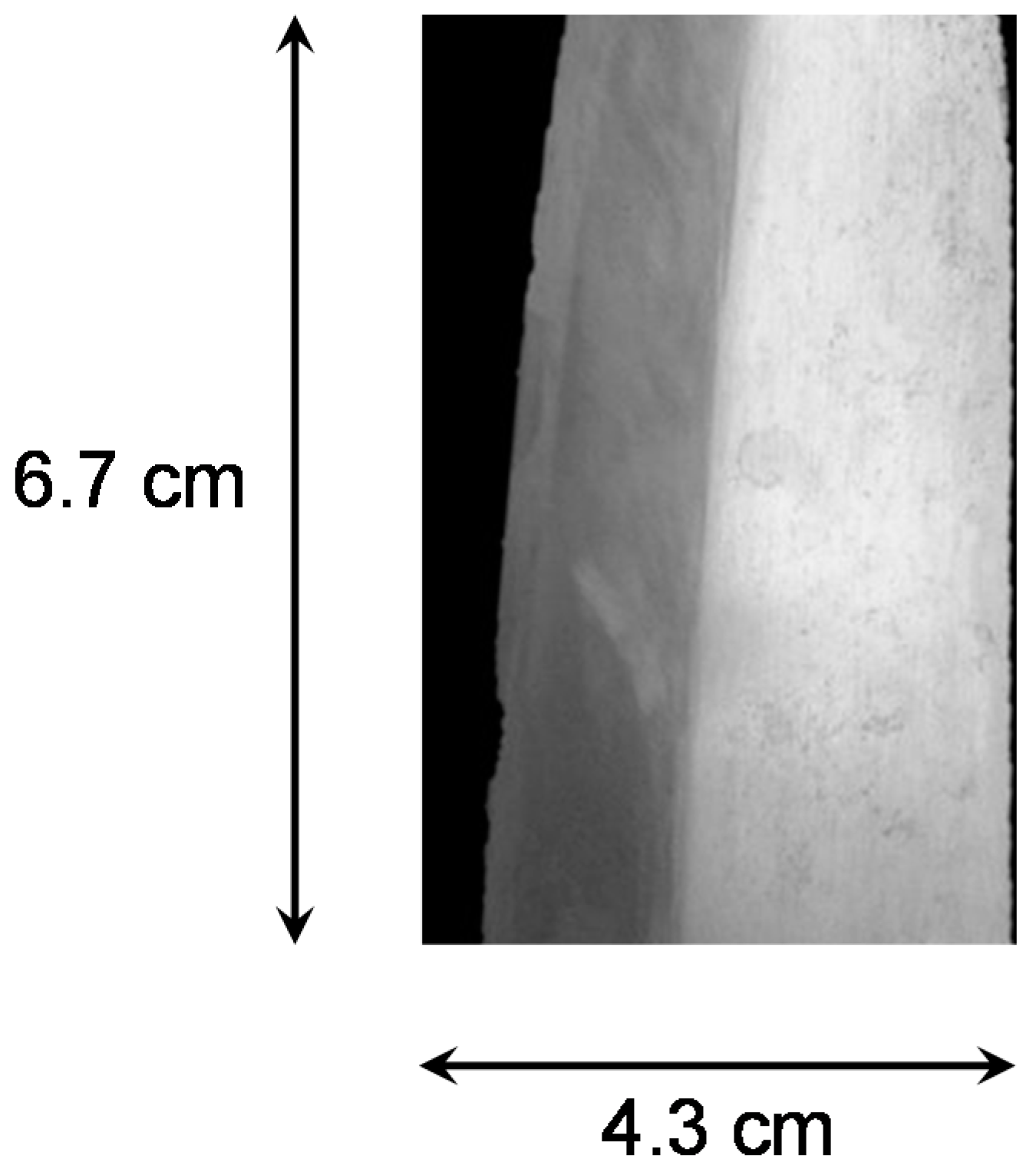

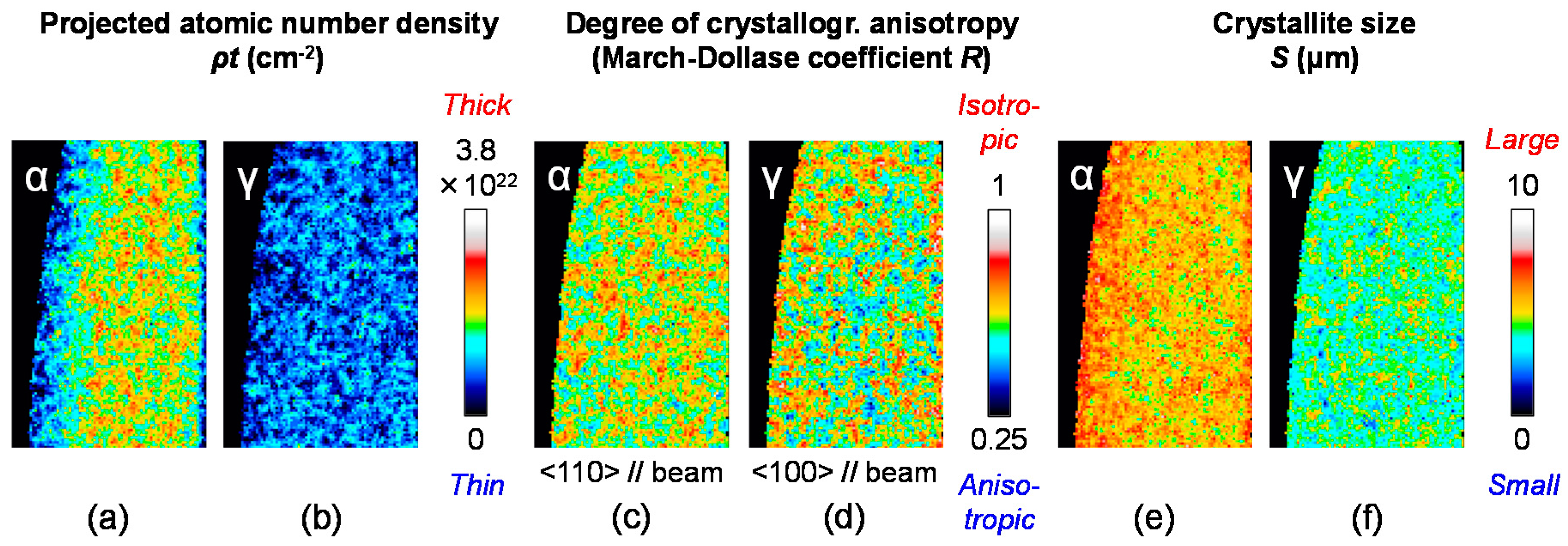

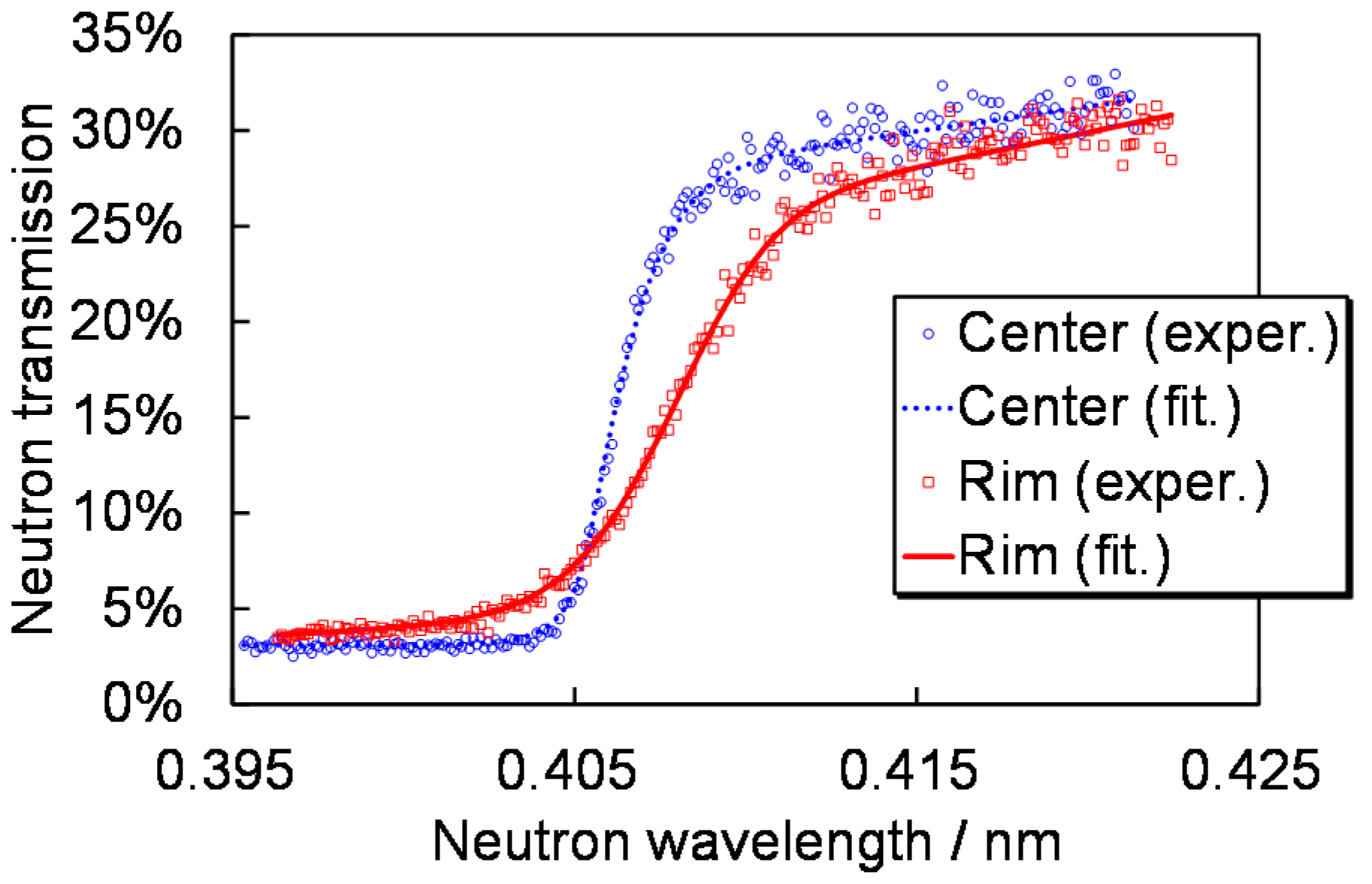
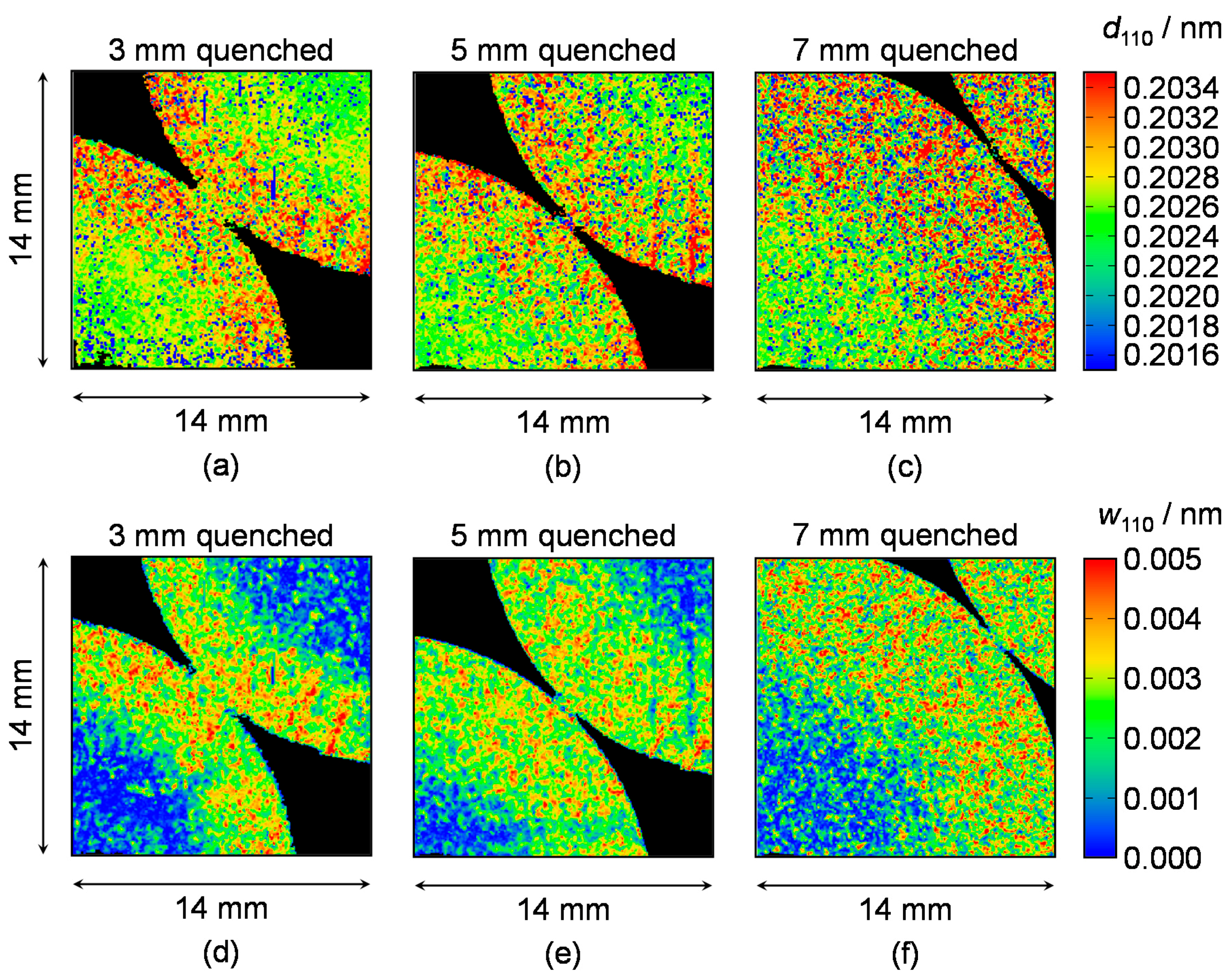
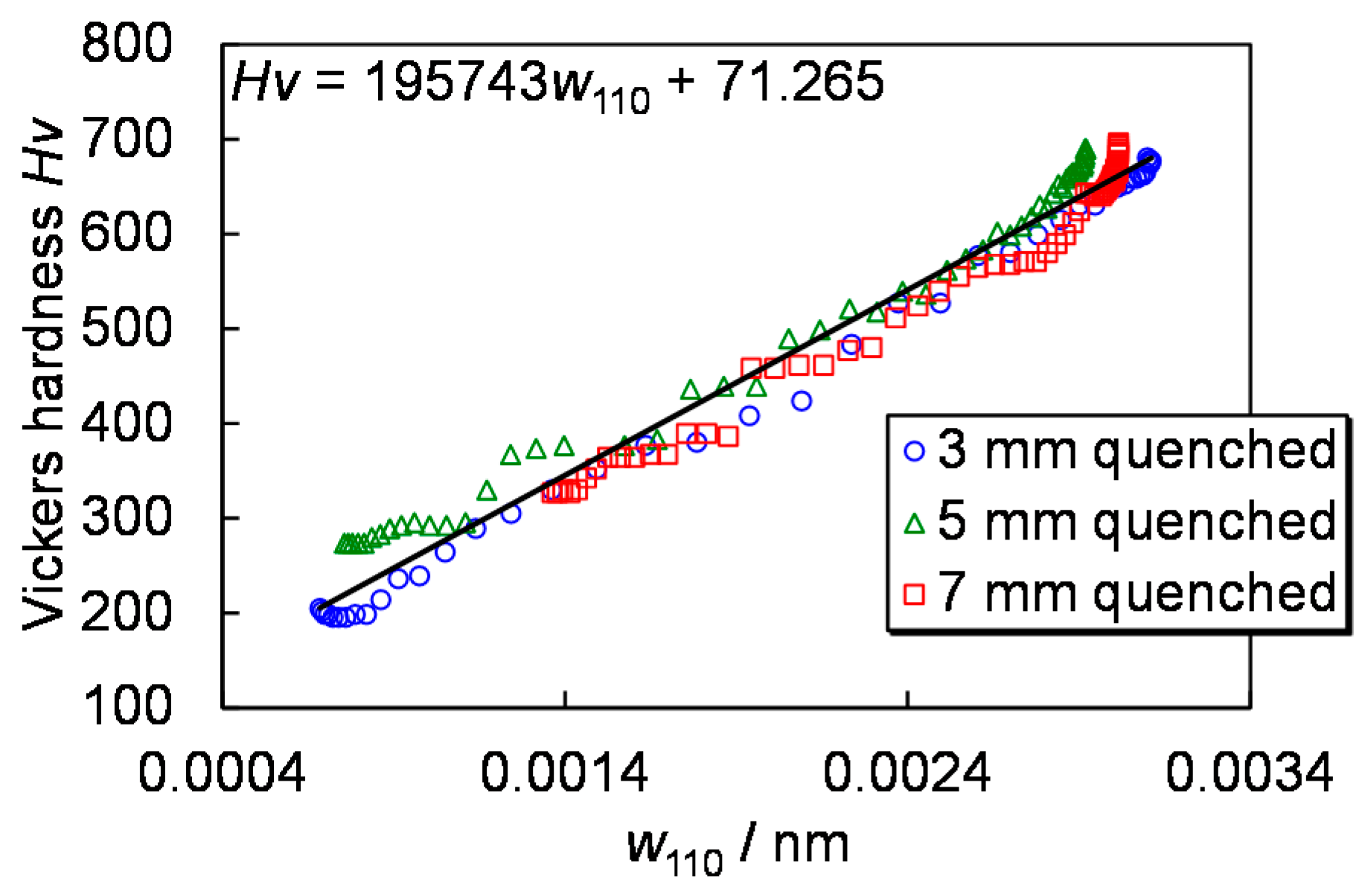

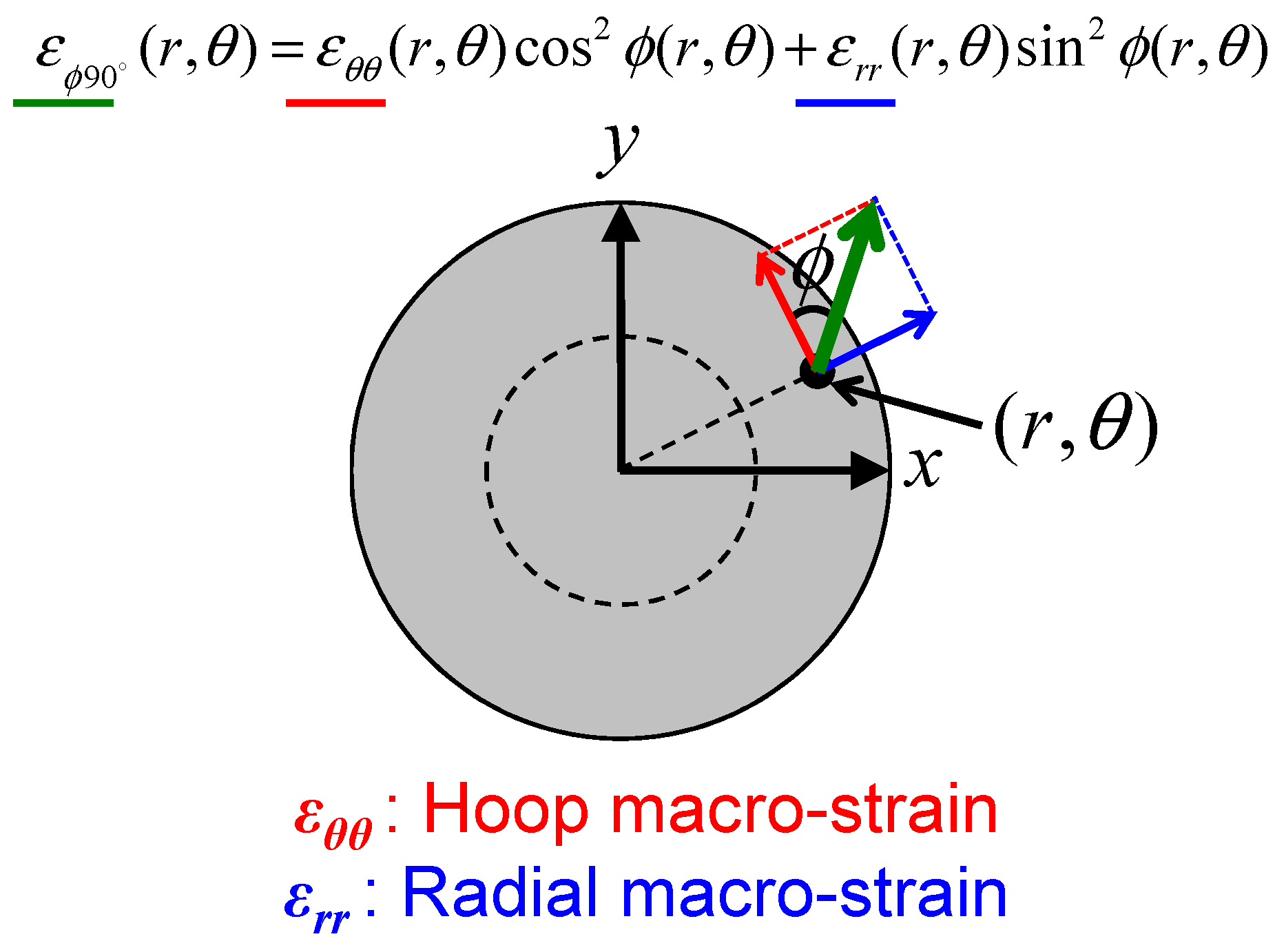
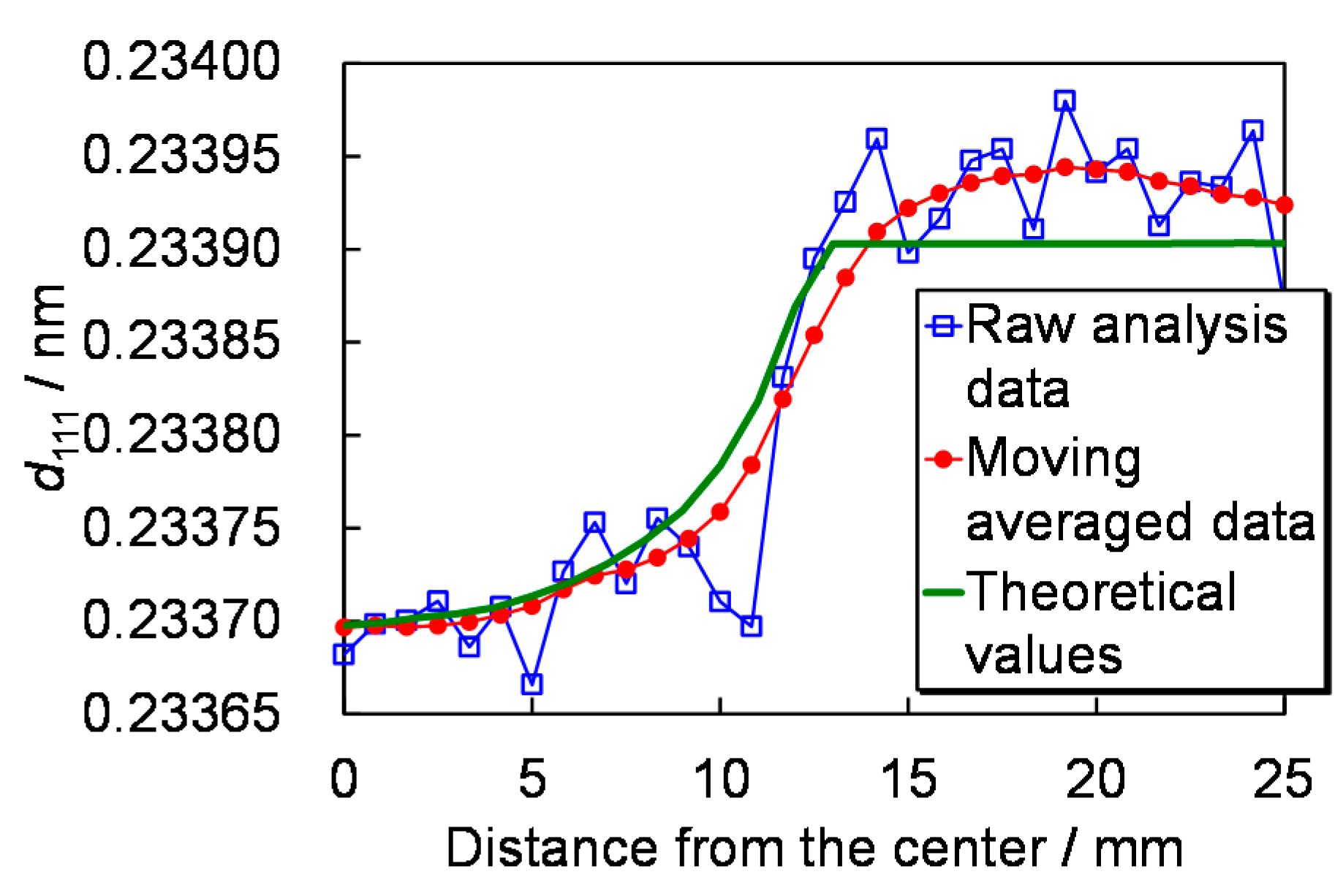
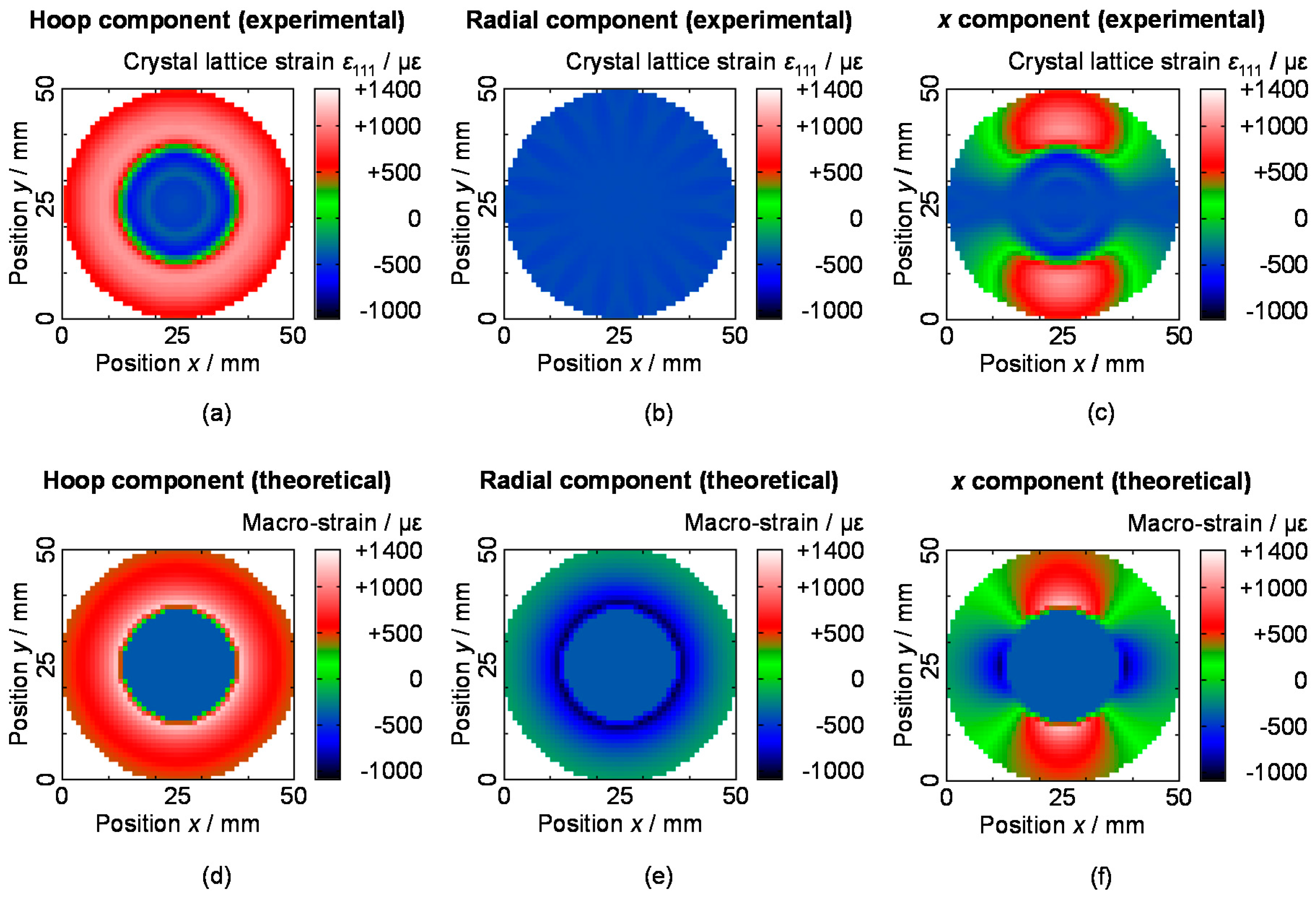
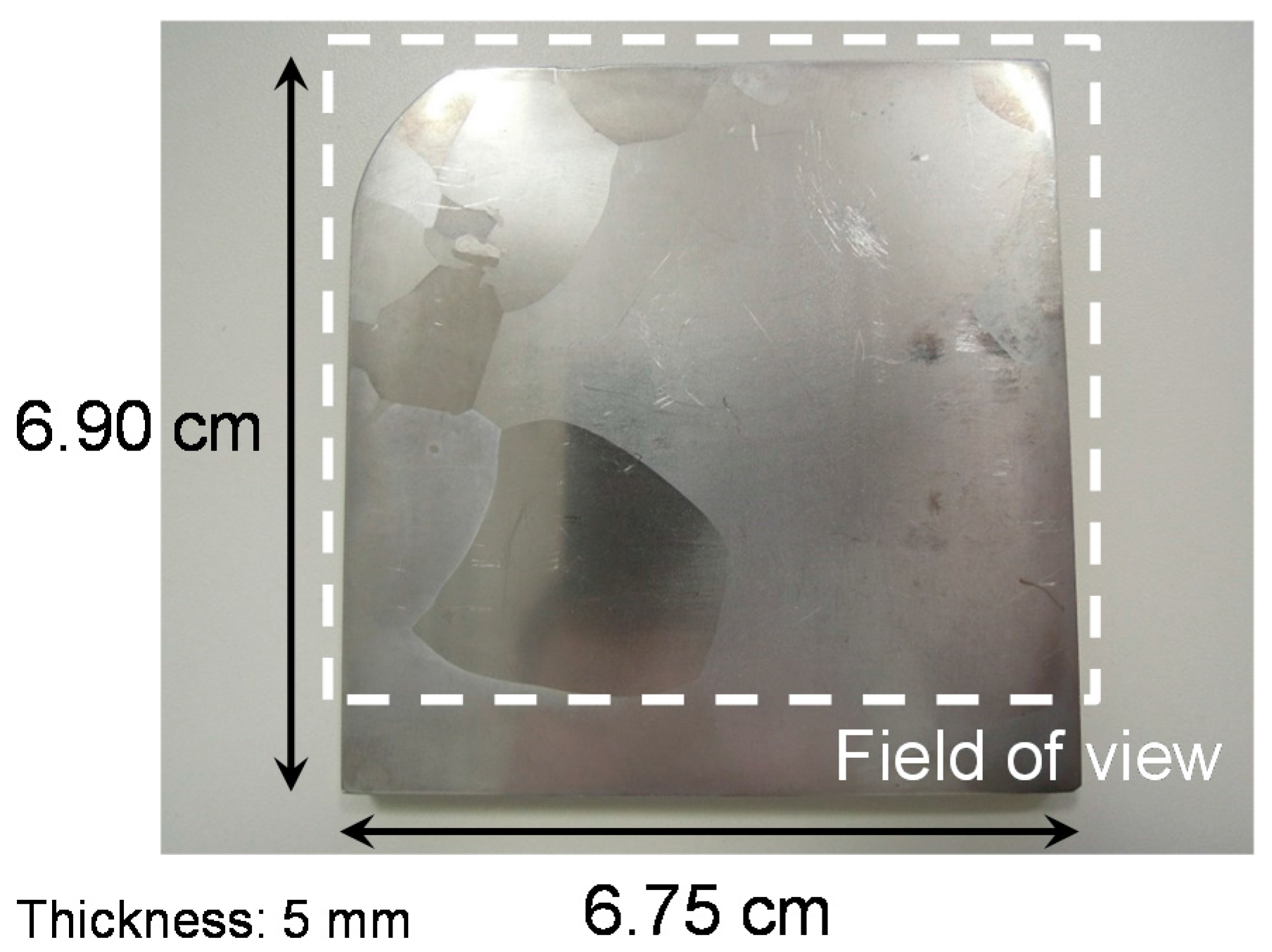
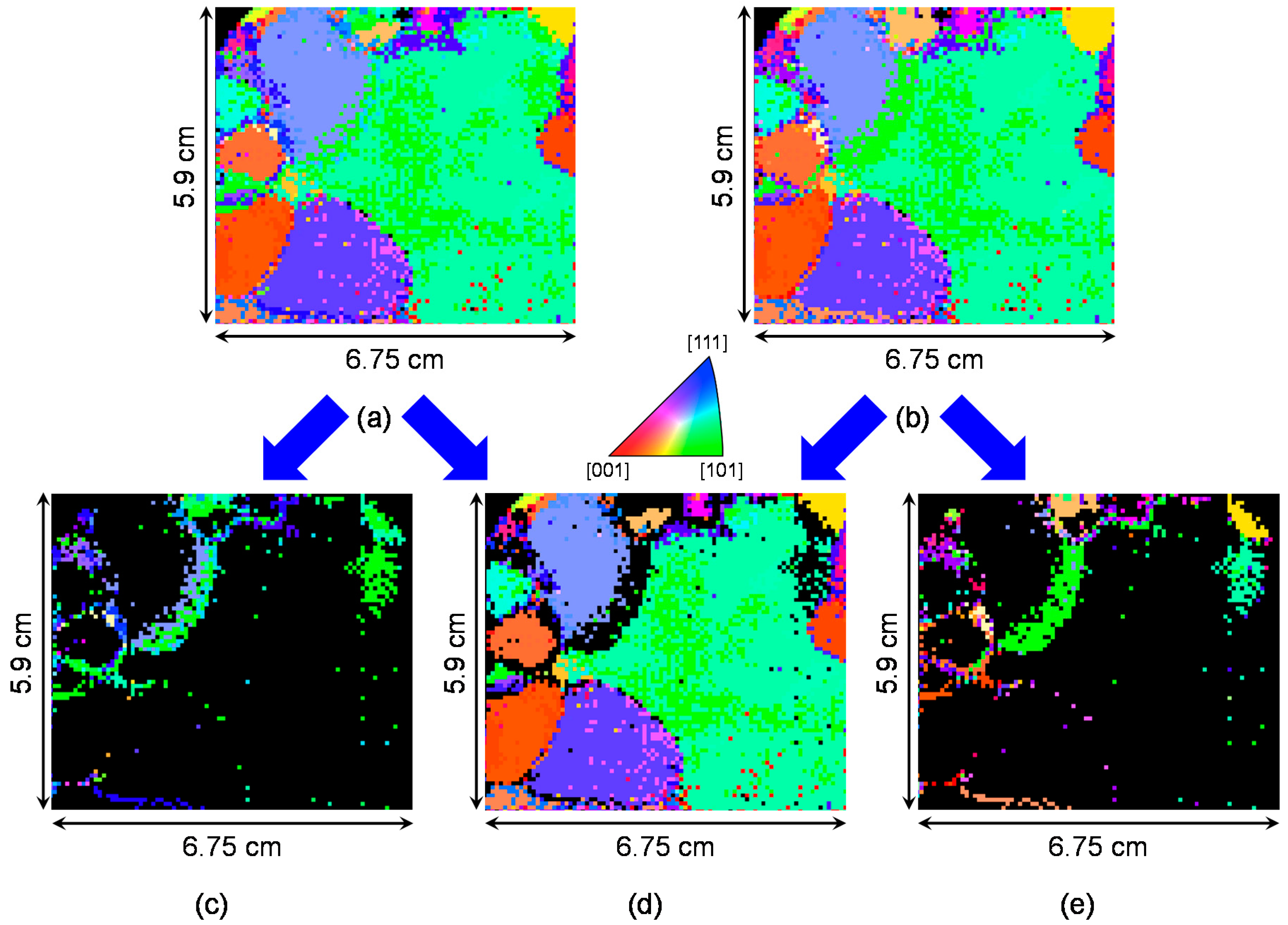
© 2017 by the author. Licensee MDPI, Basel, Switzerland. This article is an open access article distributed under the terms and conditions of the Creative Commons Attribution (CC BY) license (http://creativecommons.org/licenses/by/4.0/).
Share and Cite
Sato, H. Deriving Quantitative Crystallographic Information from the Wavelength-Resolved Neutron Transmission Analysis Performed in Imaging Mode. J. Imaging 2018, 4, 7. https://doi.org/10.3390/jimaging4010007
Sato H. Deriving Quantitative Crystallographic Information from the Wavelength-Resolved Neutron Transmission Analysis Performed in Imaging Mode. Journal of Imaging. 2018; 4(1):7. https://doi.org/10.3390/jimaging4010007
Chicago/Turabian StyleSato, Hirotaka. 2018. "Deriving Quantitative Crystallographic Information from the Wavelength-Resolved Neutron Transmission Analysis Performed in Imaging Mode" Journal of Imaging 4, no. 1: 7. https://doi.org/10.3390/jimaging4010007




